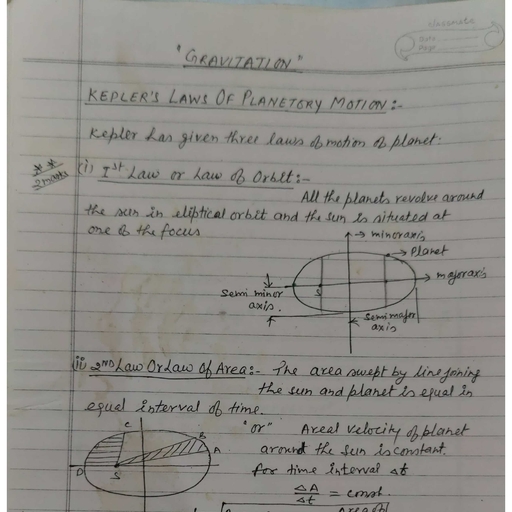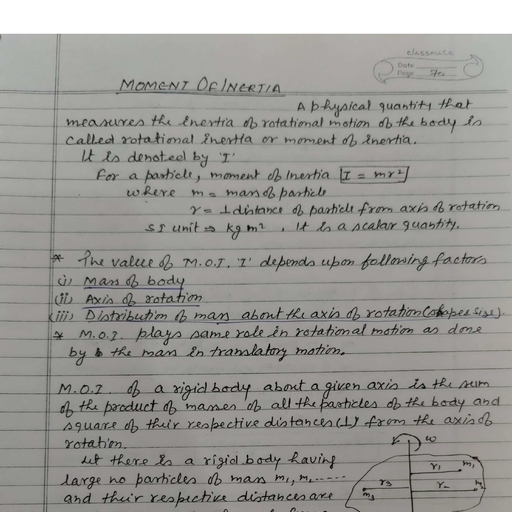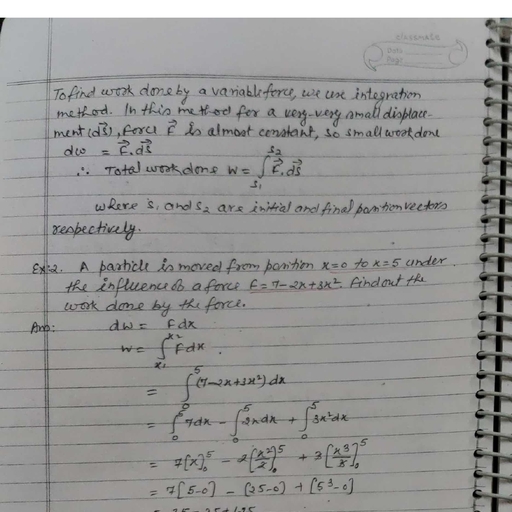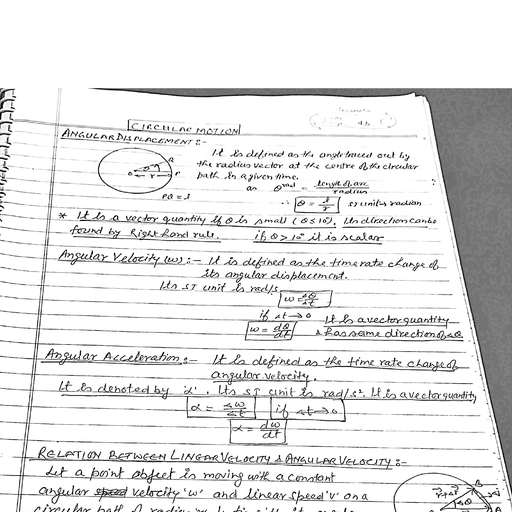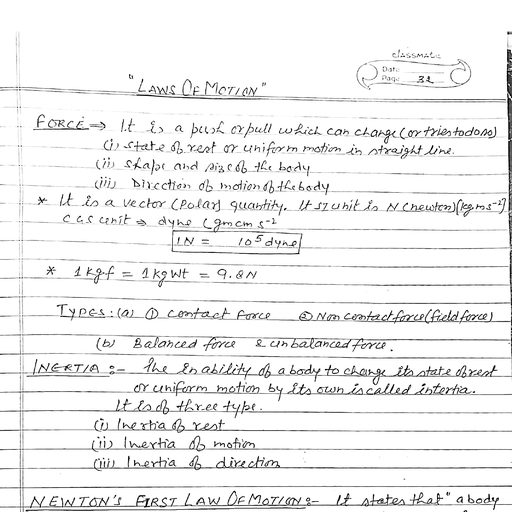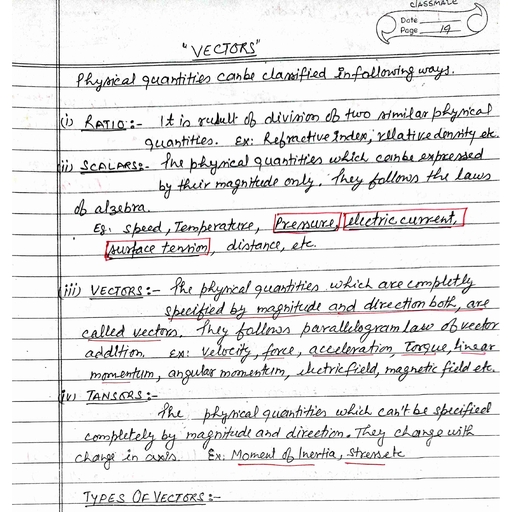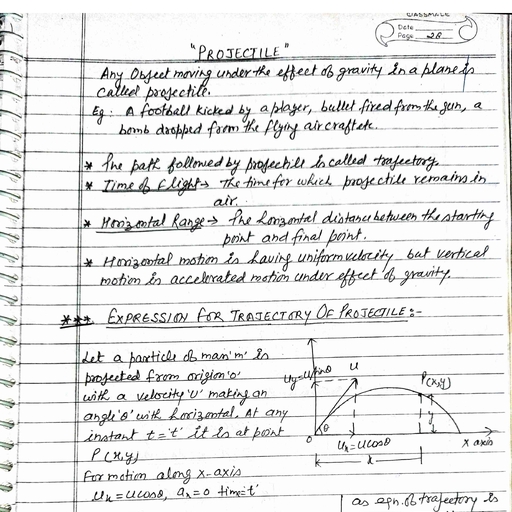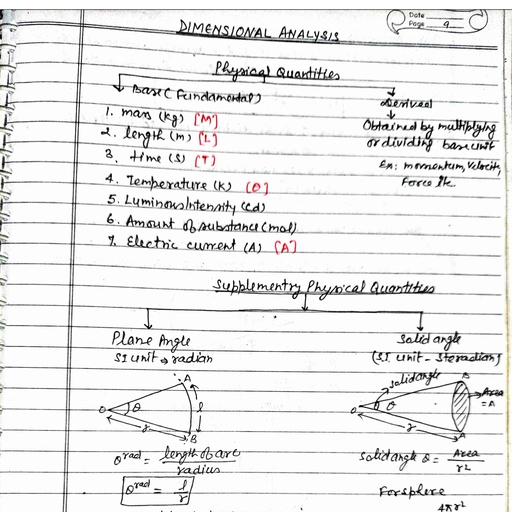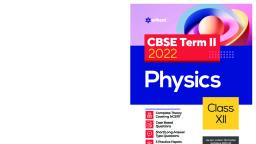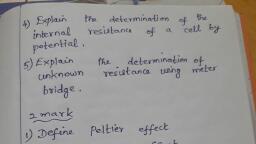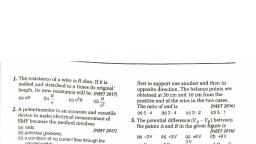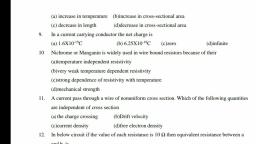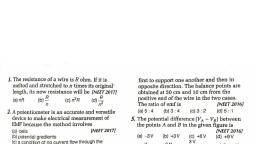Question 1 :
A cell supplies a current of $$1A$$ through a resistance of $$5\Omega$$ and a current of $$0.6A$$ through a resistance of $$10\Omega$$. What is the internal resistance of the cell?
Question 2 :
The amount of work done by the cell on a unit positive charge carrier to force it to go to the point of higher potential is called
Question 4 :
By increasing the temperature, the specific resistance of a conductor and a semiconductor
Question 6 :
The potential gradients on the potentiometer wire are$$V_{1}$$ and $$V_{2}$$ with an ideal cell and a real cell of same emf in the primary circuit then<br/>
Question 9 :
Electric power is transmitted over long distance through conducting wires of very high voltage, because.
Question 10 :
Rate at which electric work is done is called as ?<br/>
Question 11 :
The equivalent resistance of several resistors in series is equal to the:
Question 12 :
(A) The potential difference across battery may be equal to its emf<br/>(B) The potential differences across battery may be greater than its emf <br/>(C) The potential difference across battery may be less than its emf<br/>Out of the above statements which is/are correct 
Question 13 :
A potentiometer has a driving cell of negligible internal resistance. The balancing length of a Daniel cell is 5 m. If the driving cell had internal resistance, the balancing length of the same Daniel cell would have been
Question 14 :
Two cells when connected in series are balanced on $$8\ m$$ on a potentiometer. If the cells are connected with polarities of one of the cell is reversed, then they balance on $$2\ m$$. The ratio of emf's of two cells is
Question 16 :
A given resistor has the following colour scheme of the various strips on it : Brown, black, green and silver. Its value in ohm is :<br/>
Question 17 :
In general, when the temperature of a conductor increases, its resistance
Question 18 :
What is the series equivalent of 1000 $$\Omega$$ resistor and 2700 $$\Omega$$  resistor in series?<br/>
Question 19 :
If n resistance (each R) are connected in parallel then the resultant will be
Question 20 :
In our houses all electrical devices operate on 220 V. It implies that
Question 21 :
Three equal resistors connected in series across a source of e.m.f dissipate 10 watts of power. What will be the power dissipated in watts if the same resistors are connected in parallel across the same source of e.m.f?
Question 22 :
The resistance of a wire at room temperature $$30^o C$$ is found to be $$10 \Omega $$. Now to increase the resistance by 10%, the temperature of the wire must be [The temperature coefficient of resistance of the material of the wire is $$0.002 \,per\, ^oC$$].
Question 23 :
If three resistors 2 ohm, 3 ohm and 4 ohm are connected in series, then effective resistance in a circuit will be _______ ohm.
Question 24 :
If the length of a material changes 4 times and area changes 2 times. Then the resistivity of the material will be changing
Question 25 :
The electrical resistivity of a conducting wire is K. If its length and area of cross-section are doubled then the new resistivity of the wire will be :


